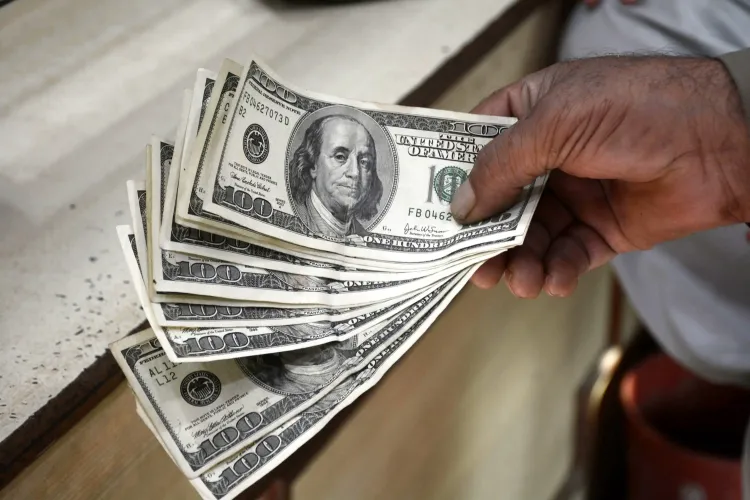Did India’s Forex Reserves Increase by $5.54 Billion?

Synopsis
Key Takeaways
- Forex reserves increased by $5.54 billion.
- Gold component rose by $5.34 billion.
- Foreign Currency Assets reached $562.29 billion.
- India's reserves cover over 11 months of imports.
- Gold now constitutes 14 percent of total reserves.
Mumbai, Nov 21 (NationPress) India's foreign exchange (Forex) reserves have experienced a remarkable increase of $5.54 billion, reaching a total of $692.58 billion for the week ending November 14, as reported by the RBI on Friday.
This notable rise is primarily attributed to a significant boost in the valuation of gold in the nation’s Forex reserves, which soared by $5.34 billion to an impressive $106.86 billion during the same period.
The surge in gold value is largely reflective of an increase in global gold prices, as the RBI values its gold holdings based on fluctuations in the international market.
Meanwhile, Foreign Currency Assets (FCAs), which represent the largest segment of the Forex reserves, saw an increase of $152 million, bringing their total to $562.29 billion.
Other smaller components of the Forex reserves, including Special Drawing Rights (SDRs), rose by $56 million to reach $18.65 billion, while the reserves held with the IMF increased by $8 million to total $4.78 billion.
According to RBI Governor Sanjay Malhotra, India's Forex reserves are sufficient to cover over 11 months of goods imports and approximately 96 percent of outstanding external debt.
The RBI Governor remarked, “Overall, India’s external sector remains resilient as key external sector vulnerability indicators continue to improve. We remain confident of meeting our external financing requirements.”
The proportion of gold in India’s Forex reserves has nearly doubled in the last decade, increasing from below 7 percent to nearly 15 percent, which indicates consistent central bank accumulation alongside rising global bullion prices. This is the highest percentage of gold in the nation's total reserves since 1996-97, as per market analysts.
Gold prices surged by approximately 65 percent in 2025, driven by heightened demand for this precious metal as a safe haven amid escalating geopolitical tensions in the Middle East and trade disputes stemming from U.S. tariff increases.
Globally, central banks have significantly increased their gold holdings as a safe-haven asset within their Forex reserves due to uncertainties arising from geopolitical tensions. The Reserve Bank of India has nearly doubled its gold reserves since 2021.
Since 2024, the RBI has added around 75 tonnes to its gold reserves, bringing the total to 880 tonnes, which now constitutes about 14 percent of India's total Forex reserves, according to a report by Morgan Stanley.
India stands as the second-largest global consumer of gold, following China, and depends on imports to satisfy its demand. The purchase of gold is deeply ingrained in Indian culture, being extensively used in jewelry for weddings and serving as a significant channel for safe-haven investments and a status symbol for families.









